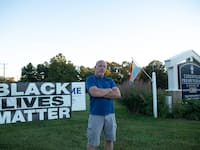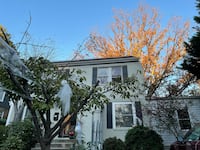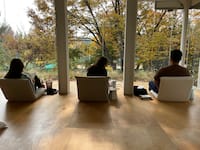On a hilltop above stood a quiet tribute to the American Indians who helped the starving Pilgrims survive. Few people bother to visit the statue of Ousamequin — the chief, or sachem, of the Wampanoag Nation whose people once numbered somewhere between 30,000 to 100,000 and whose land once stretched from Southeastern Massachusetts to parts of Rhode Island.
Long marginalized and misrepresented in the American story, the Wampanoags are braced for what’s coming this month as the country marks the 400th anniversary of the first Thanksgiving between the Pilgrims and Indians.
But the actual history of what happened in 1621 bears little resemblance to what most Americans are taught in grade school, historians say. There was likely no turkey served. There were no feathered headdresses worn. And, initially, there was no effort by the Pilgrims to invite the Wampanoags to the feast they’d made possible.
Just as Native American activists have demanded the removal of Christopher Columbus statues and pushed to transform the Columbus holiday into an acknowledgment of his brutality toward Indigenous people, they have long objected to the popular portrayal of Thanksgiving.
For the Wampanoags and many other American Indians, the fourth Thursday in November is considered a day of mourning, not a day of celebration.
Because while the Wampanoags did help the Pilgrims survive, their support was followed by years of a slow, unfolding genocide of their people and the taking of their land.
To learn the history of the Wampanoags and what happened to them after the first Thanksgiving, a visitor has to drive 30 miles south of Plymouth to the town of Mashpee, where a modest, clapboard museum sits along a two-lane road. Outside, there’s a wetu, a traditional Wampanoag house made from cedar poles and the bark of tulip poplar trees, and a mishoon, an Indian canoe.
Inside the three-room house sits Mother Bear, a 71-year-old Mashpee Wampanoag, hand-stitching a deer skin hat. She’s lived her whole life in this town and is considered one of the keepers of the Wampanoag version of the first Thanksgiving and how the encounter turned into a centuries-long disaster for the Mashpee, who now number about 2,800.
That story continues to get ignored by the roughly 1.5 million annual visitors to Plymouth’s museums and souvenir shops. The Mashpee Wampanoag museumdraws about 800 visitors a year.
Paula Peters, a Mashpee Wampanoag who is an author and educator on Native American history, said “we don’t acknowledge the American holiday of Thanksgiving … it’s a marginalization and mistelling of our story.”
‘The Great Dying’
The Wampanoags, whose name means “People of the First Light” in their native language, trace their ancestors back at least 10,000 years to southeastern Massachusetts, a land they called Patuxet.
In the 1600s, they lived in 69 villages, each with a chief, or sachem, and a medicine man. They had “messenger runners,” members of the tribe with good memories and the endurance to run to neighboring villages to deliver messages.
They occupied a land of plenty, hunting deer, elk and bear in the forests, fishing for herring and trout, and harvesting quahogs in the rivers and bays. They planted corn and used fish remains as fertilizer. In the winter, they moved inland from the harsh weather, and in the spring they moved to the coastlines.
They had traded — and fought — with European explorers since 1524.
In 1614, before the arrival of the Pilgrims, the English lured a well-known Wampanoag — Tisquantum, who was called Squanto by the English — and 20 other Wampanoag men onto a ship with the intention of selling them into slavery in Malaga, Spain. Squanto spent years trying to get back to his homeland.
During his absence, the Wampanoags were nearly wiped out by a mysterious disease that some Wampanoags believe came from the feces of rats aboard European boats, while other historians think it was likely small pox or possibly yellow fever.
Known as “The Great Dying,” the pandemic lasted three years.
By the time Squanto returned home in 1619, two-thirds of his people had been killed by it. The English explorer Thomas Dermer described the once-populous villages along the banks of the bay as being “utterly void” of people.
In 1620, the English aboard the Mayflower made their way to Plymouth after making landfall in Provincetown. The Wampanoags watched as women and children got off the boat.
They knew their interactions with the Europeans would be different this time.
“You don’t bring your women and children if you’re planning to fight,” said Paula Peters, who also runs her own communications agency called SmokeSygnals.
The Wampanoags kept tabs on the Pilgrims for months. In their first winter, half died due to cold, starvation and disease.
Ousamequin, often referred to as Massasoit, which is his title and means “great sachem,” faced a nearly impossible situation, historians and educators said. His nation’s population had been ravaged by disease, and he needed to keep peace with the neighboring Narragansetts. He probably reasoned that the better weapons of the English — guns versus his people’s bows and arrows — would make them better allies than enemies.
In the spring of 1621, he made the first contact.
“It wasn’t that he was being kind or friendly, he was in dire straits and being strategic,” said Steven Peters, the son of Paula Peters and creative director at her agency. “We were desperately trying to not become extinct.”
By the fall, the Pilgrims — thanks in large part to the Wampanoags teaching them how to plant beans and squash in a mound with maize around it and use fish remains as fertilizer — had their first harvest of crops. To celebrate its first success as a colony, the Pilgrims had a “harvest feast” that became the basis for what’s now called Thanksgiving.
The Wampanoags weren’t invited.
Ousamequin and his men showed up only after the English in their revelry shot off some of their muskets. At the sound of gunfire, the Wampanoags came running, fearing they were headed to war.
“One hundred warriors show up armed to the teeth after they heard muskets fired,” said Paula Peters.
Told it was a harvest celebration, the Wampanoags joined, bringing five deer to share, she said. There was fowl, fish, eel, shellfish and possibly cranberries from the area’s natural bogs.
In his book, “This Land Is Their Land,” author David J. Silverman said schoolchildren who make construction-paper feathered headdresses every year to portray the Indians at the first Thanksgiving are being taught fiction.
The Wampanoags didn’t wear them. Men wore a mohawk “roach” made from porcupine hair and strapped to their heads.
Darius Coombs, a Mashpee Wampanoag cultural outreach coordinator, said there’s such misinterpretation about what Thanksgiving means to American Indians.
“For us, Thanksgiving kicked off colonization,” he said. “Our lives changed dramatically. It brought disease, servitude and so many things that weren’t good for Wampanoags and other Indigenous cultures.”
Linda Coombs, an Aquinnah Wampanoag who is a tribal historian, museum educator and sister-in-law of Darius, said Thanksgiving portrays an idea of “us seeming like idiots who welcomed all of these changes and supports the idea that Pilgrims brought us a better life because they were superior.”
Mother Bear, a clan mother and cousin of Paula Peters whose English name is Anita Peters, tells visitors to the tribe’s museum that a 1789 Massachusetts law made it illegal and “punishable by death” to teach a Mashpee Wampanoag Indian to read or write.
She recounts how the English pushed the Wampanoag off their land and forced many to convert to Christianity.
“We had a pray-or-die policy at one point here among our people,” Mother Bear said. “If you didn’t become a Christian, you had to run away or be killed.”
Wampanoag land that had been held in common was eventually divided up, with each family getting 60 acres, and a system of taxation was put in place — both antithetical to Wampanoag culture.
Much later, the Wampanoags, like other tribes, also saw their children sent to harsh Indian boarding schools, where they were told to cut their long hair, abandon their “Indian ways,” and stop speaking their native language.
Paula Peters said at least two members of her family were sent to Carlisle Indian school in Pennsylvania, which became the first government-run boarding school for Native American children in 1879. Its founder, Civil War veteran and Army Lt. Col. Richard Henry Pratt, was an advocate of forced assimilation, invoking the motto: “Kill the Indian, Save the Man.”
Mother Bear recalls how her mother’s uncle, William L. “High Eagle” James, told his family to destroy any writings he’d done in their native language when he died. He didn’t want them to get in trouble for having the documents.
‘Still fighting for our land’
Frank James, a well-known Aquinnah Wampanoag activist, called his people’s welcoming and befriending the Pilgrims in 1621 “perhaps our biggest mistake.”
In 1970, he created a “National Day of Mourning” that’s become an annual event on Thanksgiving for some Wampanoags after planners for the 350th anniversary of the Mayflower landing refused to let him debunk the myths of the holiday as part of a commemoration. By then, only a few of the original Wampanoag tribes still existed.
“We, the Wampanoag, welcomed you, the white man, with open arms, little knowing that it was the beginning of the end; that before 50 years were to pass, the Wampanoag would no longer be a free people,” he wrote in that speech.
In the 1970s, the Mashpee Wampanoags sued to reclaim some of their ancestral homelands. But they lost, in part, because a federal judge said they weren’t then officially recognized as a tribe.
The Mashpee Wampanoags filed for federal recognition in the mid-1970s, and more than three decades later, in 2007, they were granted that status. (The Gay Head Aquinnah on Martha’s Vineyard are also federally recognized.)
In 2015, about 300 acres was put in federal trust for the Mashpee Wampanoag under President Barack Obama. That essentially gave them a reservation, although it is composed of dozens of parcels that are scattered throughout the Cape Cod area and represents half of 1 percent of their land historically.
But President Donald Trump’s administration tried to take the land out of trust, jeopardizing their ability to develop it.
Mashpee Wampanoag tribal officials said they’re still awaiting final word from the Department of the Interior — now led by Deb Haaland, the first Native American to head the agency — on the status of their land.
Some tribal leaders said a potential casino development would bring much-needed revenue to their community. But without the land in trust, Mashpee Wampanoag council member David Weeden said it diminishes the tribe’s sovereignty.
“Four hundred years later we’re still fighting for our land, our culture and our people,” said Brian Weeden, the tribe’s chairman and David Weeden’s nephew.
The Wampanoags are dealing with other serious issues, including the coronavirus pandemic. The tribe paid for hotel rooms for covid-infected members so elders in multigenerational households wouldn’t get sick.
Even before the pandemic, the Wampanoags struggled with chronically high rates of diabetes, high blood pressure, cancers, suicide and opioid abuse. In the expensive Cape Cod area, many Wampanoags can’t afford housing and must live elsewhere.
They also worry about overdevelopment and pollution threatening waterways and wildlife.
“The land is always our first interest,” said Vernon “Silent Drum” Lopez, the99-year-old Mashpee Wampanoag chief. “It’s our survival.”
‘I’m still here’
When she was 8 years old, Paula Peters said, a schoolteacher explained the Thanksgiving tale. After the story, another child asked, “What happened to the Indians?”
The teacher answered, “Sadly, they’re all dead.”
“No, they’re not,” Paula Peters said she replied. “I’m still here.”
She and other Wampanoags are trying to keep their culture and traditions alive.
Five years ago, the tribe started a school on its land that has about two dozen kids, who range in age from 2 to 9. They learn math, science, history and other subjects in their native Algonquian language. The tribe also offers language classes for older tribal members, many of whom were forced to not speak their language and eventually forgot.
“We want to make sure these kids understand what it means to be Native and to be Wampanoag,” said Nitana Greendeer, a Mashpee Wampanoag who is the head of the tribe’s school.
At the school one recent day, students and teachers wore orange T-shirts to honor their ancestors who had been sent to Indian boarding schools and “didn’t come home,” Greendeer said.
In one classroom, a teacher taught a dozen kids the days of the week, words for the weather, and how to describe their moods. A math lesson involved building a traditional Wampanoag wetu. Another involved students identifying plants important to American Indians.
There are no lessons planned for the 400th anniversary of Thanksgiving, Greendeer said. If the children ask, the teachers will explain: “That’s not something we celebrate because it resulted in a lot of death and cultural loss. Thanksgiving doesn’t mean to us what it means to many Americans.”
This year some Wampanoags will go to Plymouth for the National Day of Mourning. Others will gather at the old Indian Meeting House, built in 1684 and one of the oldest American Indian churches in the eastern United States, to pay their respects to their ancestors, many of whom are buried in the surrounding cemetery. Plenty of Wampanoags will gather with their families for a meal to give thanks — not for the survival of the Pilgrims but for the survival of their tribe.
“History has not been kind to our people,” Steven Peters said he tells his young sons.
“Children were taken away. Our language was silenced,” he said. “People were killed.” Still, “we persevered. We found a way to stay.”
About this story
Editing by Lynda Robinson. Photo editing by Mark Miller. Video editing by Hadley Green. Copy editing by Jamie Zega. Design by Talia Trackim.




